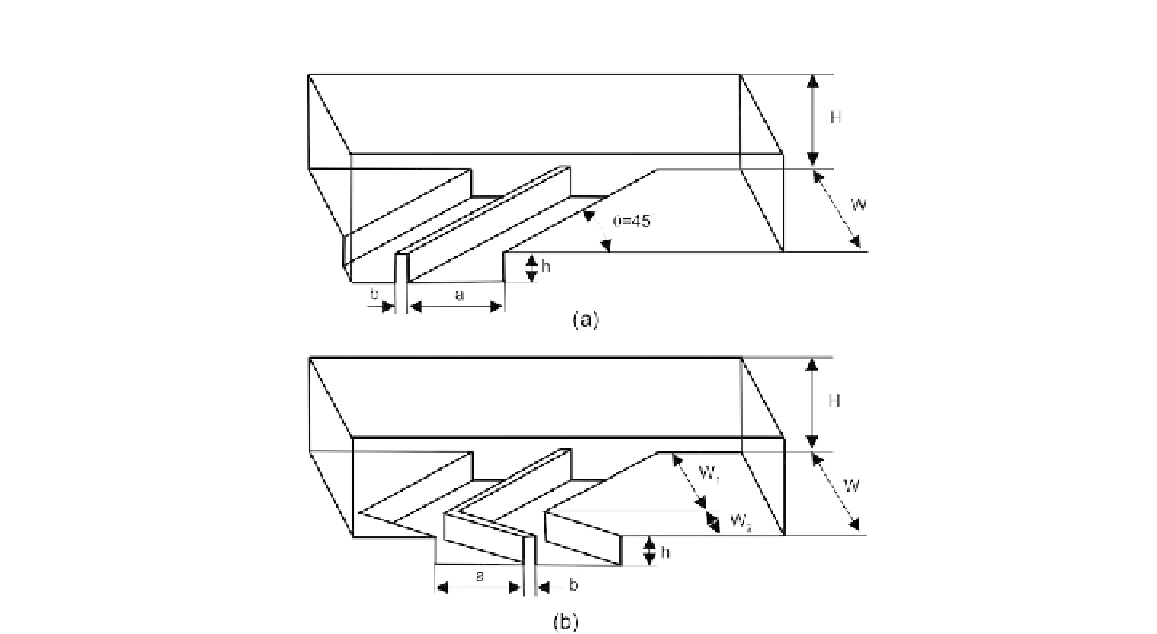Biomedical Engineering Reference
In-Depth Information
FIGURE 6.23
Geometrical parameters of (a) the SGM and (b) the SHM.
the lengths
a
and
b
of the groove and the ridge, respectively (
Fig. 6.23
). Since the asymptotic cases of
a
/
b
0 and
a
/
b
/
N
would lead to a Poiseuille flow with only axial flow component, there exists an
optimum for this ratio. Most of the reported works assumed a ratio of
a
/
b ¼
1. According to Lynn and
Dandy, at a ratio of the period
a þ b
and the channel width
W
of (
a þ b
)/
W¼
1, there is almost no change
when the ratio
a
/
b
is varied. The maximum variation is obtained with (
a þ b
)/
W¼
1/2. At this period/
channel width ratio, the optimum length ratio between the groove and the ridge is
a
/
b z
/
1/9.
A number of designs were derived from the two basic concepts discussed previously. Howell and
Floyd-Smith et al.
[33,34]
proposed a design with both types of ridges. Each mixing unit consists of
four slanted ridges at an angle of 45
and four symmetric (
p ¼
1/2) herringbone ridges. This design
aims to have alternate flow patterns with two vortices. As shown in
Fig. 6.24
, the structures on the top
wall and the bottom wall allow the formation of a pair of counter-rotating vortices vertically and
horizontally.
Fu et al.
[35]
proposed the designs of staggered oriented mixers (SORs) as depicted in
Fig. 6.25
.
The design only employs slanted structures on both top and bottom walls. The ridges on top and at the
bottom cross each other, allowing overlapping of the helical flows in the mixing channel. The
micromixer was fabricated on two glass slides. The ridges on both sides were wet-etched using an
aluminum mask. The glass slides are subsequently aligned and thermally bonded. Although the design




Search WWH ::

Custom Search